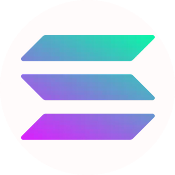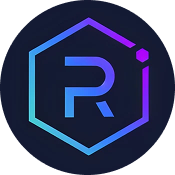When it comes to decentralized finance and blockchain scalability, Yearn Finance and Solana are two names that often come up in the same breath, yet they serve vastly different purposes within the crypto ecosystem. Yearn Finance operates as an automated yield aggregator on Ethereum, optimizing users' DeFi yields through smart contract strategies. On the other hand, Solana shines as a high-performance blockchain designed to support scalable decentralized applications with thousands of transactions per second. Understanding their core functionalities, technological innovations, and ideal use cases can help investors and enthusiasts navigate the complex world of crypto assets more effectively.
Short on time? Jump to Yearn Finance vs Solana Comparison
Understanding Yearn Finance and Solana ?
Yearn.Finance, founded by Andre Cronje in early 2020, is a decentralized platform built on Ethereum that automates yield farming strategies. It aggregates various DeFi protocols to maximize returns for users, shifting funds seamlessly across opportunities like lending, staking, and liquidity provision. Its governance token, YFI, allows holders to participate in decision-making processes, aligning community interests with platform development. Yearn's innovative vault system simplifies yield optimization, making it accessible even for those with limited technical expertise.
Solana, launched in 2020 by Anatoly Yakovenko and his team, is a high-performance blockchain platform that aims to support decentralized apps at web-scale. It introduces groundbreaking technologies like Proof of History (PoH), Tower BFT consensus, and Turbine protocol to achieve transaction speeds of up to 50,000 TPS with sub-second latency. Its architecture is designed for scalability and security, enabling developers to build complex applications that are both fast and cost-efficient. Despite facing some outages and security challenges, Solana remains one of the most promising platforms for high-throughput blockchain solutions.
While Yearn Finance focuses on optimizing yield within the DeFi ecosystem through automated strategies, Solana prioritizes transaction speed and network scalability, supporting a broad range of decentralized applications. Both platforms leverage innovative consensus mechanisms—Yearn through Ethereum's smart contract capabilities and Solana through its Proof of History combined with Tower BFT—to fulfill their unique visions. Their contrasting approaches reflect the diverse needs of the blockchain space, from efficient financial services to high-speed decentralized networks.
As DeFi continues to grow and blockchain technology advances, understanding these platforms' core technologies and use cases becomes essential for investors seeking exposure to innovative projects, whether for yield generation or scalable dApp development. Their success and ongoing development will likely influence the future landscape of decentralized finance and blockchain infrastructure.
Key Differences Between Yearn Finance and Solana
Primary Functionality
- Yearn Finance: Yearn Finance operates as a yield aggregator within the Ethereum ecosystem, automating complex DeFi strategies to maximize returns for users. Its core purpose is to simplify yield farming by intelligently reallocating funds across multiple protocols, reducing manual effort and optimizing profit. The platform's vaults and strategies are designed to adapt dynamically to market conditions, ensuring users benefit from the highest available yields while mitigating risks through diversification.
- Solana: Solana functions as a high-performance blockchain platform that supports the deployment of decentralized applications, smart contracts, and various blockchain-based services. Its primary focus is on scalability and transaction throughput, enabling developers to build applications that require fast, low-cost transactions with high reliability. Solana’s architecture allows it to process thousands of transactions per second, making it suitable for real-time applications like gaming, decentralized exchanges, and NFT platforms.
Underlying Technology
- Yearn Finance: Yearn Finance is built on Ethereum, leveraging its smart contract capabilities, ERC standards, and a rich ecosystem of DeFi protocols. It employs automated algorithms and vault strategies to optimize yields, with governance driven by its native token YFI. The platform's security depends on Ethereum's robust proof-of-stake consensus and the security measures implemented within individual vault contracts.
- Solana: Solana’s technology stack combines Proof of History (PoH), which provides a cryptographic clock, with Tower BFT—a variation of PBFT consensus optimized for PoH—to achieve high throughput and low latency. Its parallel smart contract execution engine, Sealevel, allows multiple contracts to run simultaneously, further enhancing scalability. The network's infrastructure includes innovations like Turbine and Gulf Stream to optimize data propagation and transaction forwarding.
Use Cases
- Yearn Finance: Yearn is ideal for DeFi investors seeking automated yield optimization, liquidity providers, and users interested in passive income strategies. Its vaults and yield farming strategies are designed for those who want to maximize DeFi returns without constant manual management, making it suitable for both retail and institutional investors looking for efficient asset management within Ethereum’s ecosystem.
- Solana: Solana is best suited for developers building scalable decentralized applications, such as decentralized exchanges, NFT marketplaces, gaming platforms, and enterprise solutions. Its high throughput and low latency are particularly valuable for applications that demand rapid transaction speeds and high scalability, making it attractive for projects aiming to serve millions of users simultaneously.
Governance Model
- Yearn Finance: Yearn governance revolves around its YFI token, which grants holders voting rights on protocol upgrades, strategy approval, and parameter adjustments. The governance process is designed to be decentralized, with voting requiring staking YFI tokens, and proposals often undergo community discussion before implementation. This model encourages active participation from the community in shaping the platform’s future.
- Solana: Solana employs a delegated proof-of-stake (DPoS) system where validators are responsible for network security and transaction validation. While Solana has introduced governance mechanisms, much of its development and upgrades are driven by the Solana Foundation and its core team. Community proposals and discussions are also part of its ecosystem, but decision-making is more centralized compared to Yearn’s token-based governance.
Security and Reliability
- Yearn Finance: Yearn’s security relies heavily on Ethereum’s proven proof-of-stake consensus, along with audits of individual vault contracts. Despite its innovative strategies, Yearn has faced security challenges, such as the $11 million exploit in early 2021. Ongoing audits and community-driven improvements aim to enhance platform safety, but users must remain aware of smart contract risks inherent in DeFi.
- Solana: Solana’s high-speed architecture has faced outages and security incidents, highlighting the challenges of maintaining network stability at scale. Despite these issues, Solana employs rigorous security practices, including cryptographic proofs and validator incentives. Its novel PoH mechanism also introduces unique security considerations that are continuously refined through network upgrades.
Yearn Finance vs Solana Comparison
| Feature | ✅ Yearn Finance | ✅ Solana |
|---|---|---|
| Primary Function | Yield aggregator on Ethereum | High-performance smart contract platform |
| Technology Core | Ethereum smart contracts, vault strategies | Proof of History, Tower BFT, Sealevel |
| Transaction Speed | Dependent on Ethereum, generally slower | Up to 50,000 TPS |
| Ideal Use Case | Passive DeFi yield farming | Scalable dApps, NFT, DeFi platforms |
| Governance | Token-based governance via YFI | Validator-led with community proposals |
| Security Focus | Ethereum’s proven security, smart contract audits | Novel consensus, network stability challenges |
Ideal For
Choose Yearn Finance: DeFi investors seeking automated yield optimization within Ethereum's ecosystem.
Choose Solana: Developers and projects requiring scalable, fast blockchain infrastructure for decentralized applications.
Conclusion: Yearn Finance vs Solana
Yearn Finance and Solana exemplify two distinct paths within the blockchain universe—one focused on maximizing DeFi yields through sophisticated automation, the other on providing a scalable infrastructure for decentralized applications. Yearn’s strength lies in its ability to simplify complex yield strategies and optimize returns on Ethereum, while Solana’s innovation in transaction speed and throughput makes it a formidable platform for high-performance dApps. Both platforms continue to evolve, addressing their respective challenges while expanding their ecosystems.
Investors and developers should assess their specific needs—whether seeking passive income through DeFi protocols or building scalable, real-time applications—before choosing between these platforms. While Yearn offers an accessible route into DeFi yield farming, Solana provides the backbone for the next generation of decentralized, high-speed applications. Their continued development will shape the future of blockchain technology, emphasizing either financial efficiency or infrastructural scalability.






